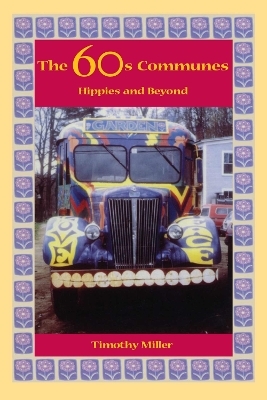
The 60s Communes
Hippies and Beyond
Seiten
1999
Syracuse University Press (Verlag)
978-0-8156-0601-7 (ISBN)
Syracuse University Press (Verlag)
978-0-8156-0601-7 (ISBN)
A survey of the wave of communal living in America, which crested in the 1960s and early 1970s. Based on over 500 interviews conducted for the 60s Commune Project, among other sources, it preserves a colourful and vigorous episode in American history.
The greatest wave of communal living in American history crested in the tumultuous 1960s era including the early 1970s. To the fascination and amusement of more decorous citizens, hundreds of thousands of mostly young dreamers set out to build a new culture apart from the established society that they believed was on a slippery slope to oblivion. Widely believed by the larger public to be sinks of drug-ridden sexual immorality, the communes variously fascinated and repelled the American people. The intentional communities of the 1960s era were far more diverse than the stereotype of the hippie commune would suggest. A great many of them were religious in basis, stressing spiritual seeking and disciplined lifestyles. Others were founded on secular visions of a better society. Hundreds of them became so stable that they still survive today. This is a survey of the broad sweep of this great social yearning from the first portents of a new type of communitarianism in the early 1960s through the waning of the movement in the mid-1970s. Based on over 500 interviews conducted for the 60s Commune Project, among other sources, it preserves a colourful and vigorous episode in American history.
The greatest wave of communal living in American history crested in the tumultuous 1960s era including the early 1970s. To the fascination and amusement of more decorous citizens, hundreds of thousands of mostly young dreamers set out to build a new culture apart from the established society that they believed was on a slippery slope to oblivion. Widely believed by the larger public to be sinks of drug-ridden sexual immorality, the communes variously fascinated and repelled the American people. The intentional communities of the 1960s era were far more diverse than the stereotype of the hippie commune would suggest. A great many of them were religious in basis, stressing spiritual seeking and disciplined lifestyles. Others were founded on secular visions of a better society. Hundreds of them became so stable that they still survive today. This is a survey of the broad sweep of this great social yearning from the first portents of a new type of communitarianism in the early 1960s through the waning of the movement in the mid-1970s. Based on over 500 interviews conducted for the 60s Commune Project, among other sources, it preserves a colourful and vigorous episode in American history.
Timothy Miller is a professor of religious studies at the University of Kansas. He has published two earlier books on intentional communities, including The Quest for Utopia in Twentieth-Century America to which this new volume is a successor. He co-directed the 60s Communes Project, an extensive documentation effort that preserved memories and artifacts from the 1960s-era communes.
| Erscheint lt. Verlag | 31.12.1999 |
|---|---|
| Reihe/Serie | Syracuse Studies on Peace and Conflict Resolution |
| Verlagsort | New York |
| Sprache | englisch |
| Maße | 152 x 229 mm |
| Gewicht | 512 g |
| Themenwelt | Geisteswissenschaften ► Religion / Theologie |
| Sozialwissenschaften ► Soziologie ► Makrosoziologie | |
| ISBN-10 | 0-8156-0601-X / 081560601X |
| ISBN-13 | 978-0-8156-0601-7 / 9780815606017 |
| Zustand | Neuware |
| Haben Sie eine Frage zum Produkt? |
Mehr entdecken
aus dem Bereich
aus dem Bereich
deutsch-jüdische Lebensgeschichten
Buch | Hardcover (2024)
Wallstein Erfolgstitel - Belletristik und Sachbuch (Verlag)
48,00 €
queere Heldin unterm Hakenkreuz
Buch | Hardcover (2023)
Kremayr & Scheriau (Verlag)
24,00 €


